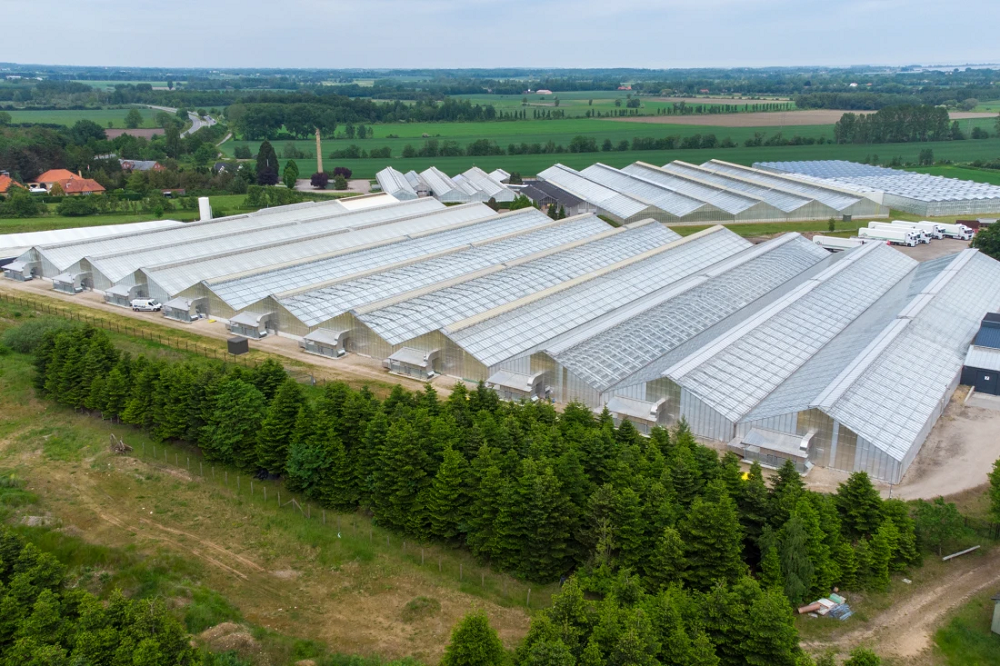The medicinal cannabis sector has taken a buffeting, but Gina Rinehart-backed LGP hopes a new facility in Denmark will help it ride out the turbulence.
Odense, Denmark | It only takes about 15 minutes to drive from the centre of Odense, a Danish university town, into the farmland that skirts it. But it’s enough time, as always, to strike up conversation with a taxi driver.
He learns I’m an Aussie, and isn’t surprised. “I’ve driven Australians out here before,” he says.
“Here” is a large collection of greenhouses overlooked by a compact, functional office building and a couple of bungalows that pre-date the site’s industrial development.
Unbeknownst to this cabbie, the greenhouses are teeming not with tomatoes or strawberries, but the tall, fragrant flowers of cannabis.
Only the sign at the gate gives away that we have arrived at the perhaps unlikely European outpost of Perth-based, ASX-listed medicinal cannabis company Little Green Pharma.
For LGP’s spirited founder and chief executive Fleta Solomon, who was visiting the site this month with her board, this facility is at the centre of her ambition to nurture her seven-year-old start-up into a European market leader.
“Europe will be the biggest medicinal cannabis market outside of North America, but it’s still in its infancy, it’s still emerging. We just wanted to be here,” she says.
The company has quietly been making inroads into Europe from its base in Perth, where its production facility churns out flowers and oils that are already EU-compliant.
LGP has several deals with distributors in Germany, one of the world’s largest consumers of medicinal cannabis. In France, the company is the key supplier to an official clinical trial, taking a loss in the hope of reaping a first-mover advantage if the trials pave the way to legalisation.
In Italy, LGP has won a government tender to fill shortfalls in the government’s own production. It is also targeting Britain, Poland, Portugal and Sweden.
But two years ago, the sheer volume of demand from Germany was already beginning to tax the capacity of the company’s Perth facility. Solomon and her team were weighing up a potentially slow and costly project to expand the plant Down Under, when they got a tip-off that Canada’s Canopy Growth Corporation was looking to shutter its operation in Odense.
“They had different procedures, a different purpose. For us, we knew that we could streamline that operation and make it efficient, and then we’d have a facility in the market that is going to be the future,” Solomon says.
LGP snaffled the facility for $20 million – a fraction of the $100 million-plus that the previous owner may have invested into it, and less than the value of the land and assets.
“If we’d had to build this facility ourselves we probably wouldn’t have done it, we wouldn’t have built it so large. But the fact is that we got it so cheap,” Solomon says.
The headcount was slimmed down from more than 100 to about 40. The silos in the business were broken down to ensure that the diverse elements of researching, growing and processing cannabis were more closely connected.
The challenge of cannabis is that manufacturers are trying to produce a uniform medicine from an inherently non-uniform input: a living plant. This puts a premium on concentrating your production in fewer sites, and on finding and propagating the ideal genetic stock.
“We hired an R&D specialist, a plant geneticist who was able to go phenotyping or pheno-hunting and get the right cultivars for us and import them,” Solomon says.
“It’s actually easier to import seeds and cuttings into Denmark than it is into Australia. So, this became our hub for the genetics, and it’s such a big facility that we have got enough space to store them.
“That’s the beauty of this place: we’ve got all of these genetics ready to go, and it’s preparing for the European market when that opens.”
LGP’s Australian operation will ultimately focus on higher-cost, higher-price boutique flowers, with an output of about three tonnes of raw biomass a year. In Denmark, Solomon says, output could be up to 30 tonnes a year.
Her optimism doesn’t seem to have rubbed off on investors. At 17¢, LGP’s share price is at its lowest since listing at 45¢ in February 2020. It peaked at 94¢ in early 2021, and has lost almost half its value in just the past year.
Sentiment has turned against the sector as a whole. The industry has been a bit like tech: full of hype, hope and surging values but short on actual cash flow and profits. Rising interest rates, surging costs and slowing economies have forced a reality check.
Solomon hopes she can insulate her company from the biggest speculative swings. She says LGP is “approaching cash flow break-even”, and has benefited from its larger shareholders – who include mining magnate Gina Rinehart – being “supportive, loyal and really involved”.
The downturn has increased her focus on cost control and trying to turn a profit. The coming shake-out of the sector could throw up acquisition opportunities, but she says she’ll resist the temptation unless there is something that “fits into our growth strategy, and is the right deal at the right price”.
“Our priority is to get to profitability. And if that means you have to forgo certain activities within the supply chain, then we just need to be really sensible,” she says.
Solomon projects bullishness about her company’s prospects for Europe-led growth, but an almost anxious caution her bottom line. All up, though, you’d have to say she’s aiming, well, high.

